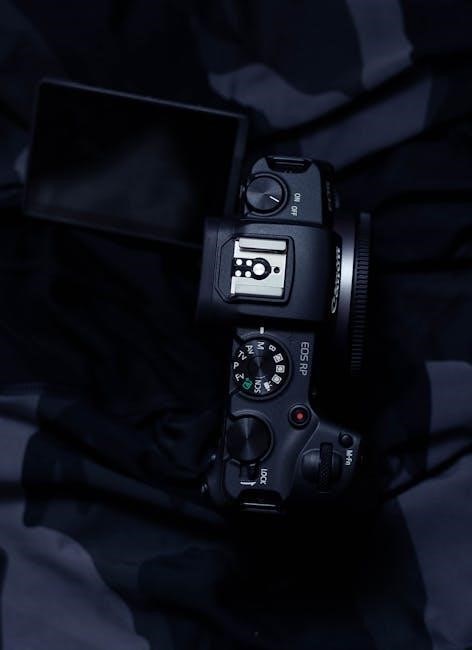The Canon FL Lens Manual provides comprehensive guidance for understanding and optimizing FL lens usage, covering setup, maintenance, and troubleshooting for enhanced photography experiences and equipment longevity.
Overview of Canon FL Lens Series
The Canon FL Lens Series, introduced in the late 1960s, offers a range of high-quality manual focus lenses designed for compatibility with Canon’s Breech-Lock FD mount system. These lenses are known for their optical precision and durability, catering to both professional photographers and enthusiasts. The series includes a variety of focal lengths, from wide-angle to telephoto, and even macro lenses for close-up photography. FL lenses are celebrated for their portability, versatility, and compatibility with older Canon models, making them a popular choice among collectors and photographers seeking classic optics with modern adaptability.
Compatibility with Canon Camera Models
Canon FL lenses are designed to work seamlessly with the Breech-Lock FD mount system, ensuring compatibility with a variety of Canon camera models. These lenses are compatible with classic Canon SLRs like the F-1, FTb, and EF series. While they may not natively support modern EOS cameras, adapters enable their use on newer models, offering photographers a blend of vintage optics with contemporary technology. This adaptability makes FL lenses a versatile choice for both film and digital photography enthusiasts seeking to explore diverse creative possibilities with their equipment.
Importance of the Manual for Optimal Lens Usage
Importance of the Manual for Optimal Lens Usage
The Canon FL Lens Manual is an essential resource for photographers seeking to maximize the potential of their FL lenses; It provides detailed instructions on aperture control, focusing techniques, and compatibility with various camera models. Additionally, the manual offers troubleshooting solutions for common issues such as aperture sticking and focusing problems. By following the guidelines, users can ensure optimal performance, extend lens longevity, and achieve professional-grade results in their photography. The manual is thus a crucial tool for both novice and experienced photographers using FL lenses.

Understanding Aperture and Focusing
Understanding aperture and focusing in Canon FL lenses is crucial for controlling light and achieving sharp images. The manual provides detailed guidance on optimizing these settings for desired photographic effects.
Aperture Control in FL Lenses
Aperture control in Canon FL lenses is managed manually using the aperture ring, which features click stops for precise f-stop adjustments. The lenses support both automatic and manual aperture modes, allowing photographers to switch between settings for different shooting scenarios. For accessories like Macro Couplers or adapters, the lens must be set to manual diaphragm control to ensure proper functionality. This ensures accurate exposure settings and maintains image quality. Proper aperture control is essential for achieving desired depth of field and lighting effects in various photography situations.
Focusing Techniques for FL Lenses
Focusing with Canon FL lenses is done manually using the focusing ring, designed for precise control. Techniques include pre-focusing for quick subject capture and using the lens’s depth-of-field scale for zone focusing. The smooth, dampened focusing mechanism ensures accurate adjustments, while the lens’s minimum aperture setting aids in maximizing depth of field for sharp images. Proper focusing techniques enhance image clarity and allow photographers to achieve professional-grade results with these lenses.
Manual vs. Automatic Aperture Modes
Canon FL lenses offer both manual and automatic aperture modes, providing flexibility for photographers. In manual mode, the aperture is set directly using the lens ring, while the automatic mode links the aperture to the camera’s system for easy adjustments. The manual mode is ideal for precise control, especially in stopped-down metering, while the automatic mode simplifies operation during shooting. Proper mode selection ensures optimal exposure and performance, making FL lenses versatile for various photography settings and preferences.

Mounting and Lens Compatibility
Canon FL lenses use the Breech-Lock FD mount system, ensuring compatibility with older Canon models like the F-1. Adapters enable use on modern cameras, preserving functionality and quality.
Canon Breech-Lock FD Mount System
The Canon Breech-Lock FD mount system ensures a secure and precise lens-to-camera connection. Designed for FL lenses, it features a rotating ring that locks the lens in place, preventing movement during use. This system is compatible with classic Canon models like the F-1 and FTb, ensuring legacy support. The Breech-Lock mechanism provides a robust connection, reducing play and ensuring sharp images. Its intuitive design allows for quick mounting and dismounting, while maintaining optical alignment. This system exemplifies Canon’s commitment to durability and optical excellence in their FL lens series.
Using FL Lenses with Modern Canon Cameras
While FL lenses are designed for older Canon models, they can be adapted for use with modern Canon cameras. By utilizing lens adapters, photographers can mount FL lenses on EOS bodies, enabling manual focus and aperture control. This setup requires stopped-down metering, as modern cameras may not support automatic aperture functionality with legacy glass. Adapters ensure proper alignment and maintain optical quality, allowing enthusiasts to explore the unique characteristics of FL lenses on contemporary DSLR and mirrorless systems, blending classic optics with modern technology for creative results. This compatibility bridge preserves the utility of vintage lenses in today’s photography landscape.
Lens Adapters for Expanded Compatibility
Lens adapters enable FL lenses to be used with modern Canon cameras, bridging compatibility gaps. These adapters, such as FD-to-EF or FD-to-RF mounts, allow manual focus and aperture control on newer bodies. They maintain optical quality while enabling stopped-down metering for accurate exposures. Adapters are essential for photographers seeking to leverage the unique optical characteristics of FL lenses on contemporary DSLR or mirrorless systems, ensuring compatibility and creative flexibility without compromising image quality or functionality.
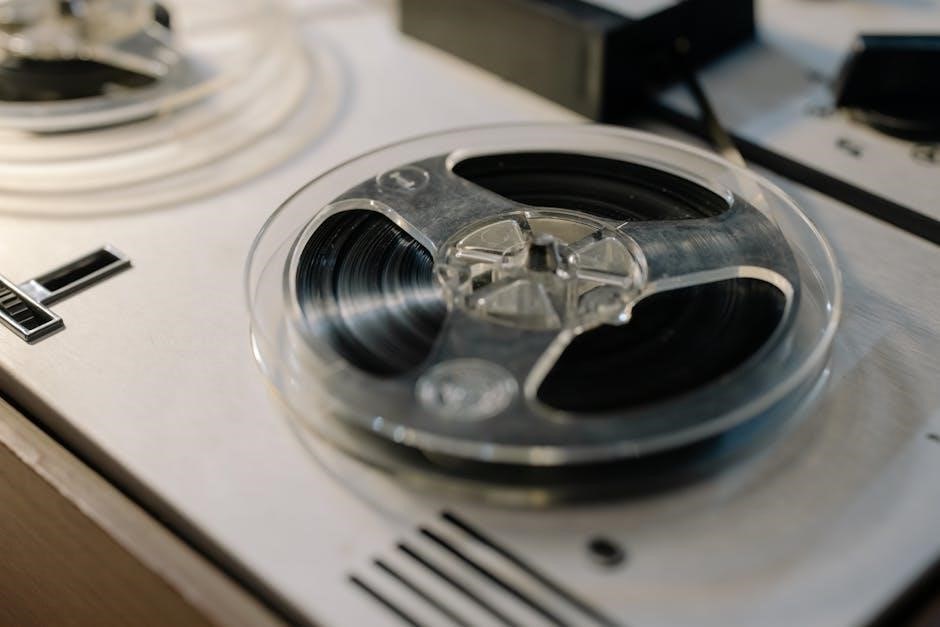
Metering and Exposure Control
Metering and exposure control are crucial for achieving precise results with Canon FL lenses, ensuring optimal image quality through accurate settings and techniques tailored to the lens specifications.
Stopped-Down Metering with FL Lenses
Stopped-down metering with FL lenses ensures accurate exposure readings by measuring light through the lens at its working aperture. This method is essential for precise control, especially in manual modes. Set the ASA film speed first, then adjust the aperture ring to the desired f-stop. With the lens in manual mode, the camera measures light through the stopped-down aperture, providing an accurate reading for optimal exposure. This technique is particularly useful for ensuring sharpness and correct lighting in various shooting conditions, making it a valuable skill for photographers using FL lenses.
Setting the Correct ASA Film Speed
Setting the correct ASA film speed is crucial for achieving accurate exposures with Canon FL lenses. The ASA setting determines the film’s sensitivity to light, directly impacting exposure calculations. To set the ASA, align the film speed with the value indicated on the film cartridge. This ensures the camera’s metering system accurately calculates the optimal aperture and shutter speed combination. Proper ASA setting is essential for consistent results, especially when using manual modes or stopped-down metering, as it forms the foundation for precise exposure control in various lighting conditions.
Exposure Compensation Techniques
Exposure compensation with Canon FL lenses allows photographers to fine-tune their shots for optimal brightness. By adjusting the aperture or shutter speed, users can correct meter readings to suit creative goals. Stopped-down metering ensures accurate results, while manual modes provide full control. Bracketing shots at different exposures is a practical approach to capture a range of lighting scenarios; Additionally, using neutral density filters or lens hoods can help maintain desired exposure levels in challenging lighting conditions, ensuring well-balanced and visually appealing images every time.
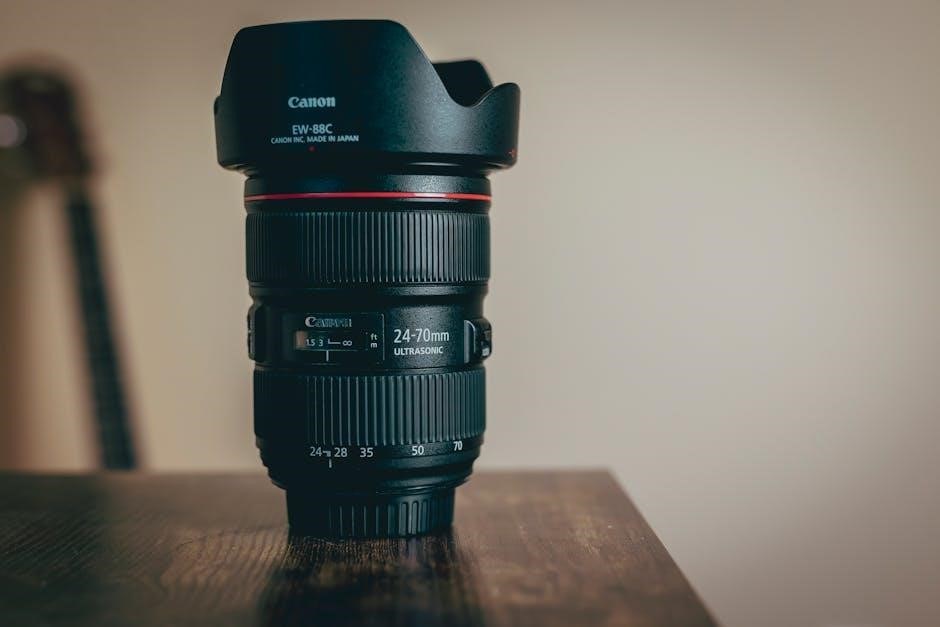
Specific FL Lens Models
The Canon FL series offers a diverse range of lenses, including wide-angle, telephoto, and macro options, each designed for specific photographic needs and delivering exceptional optical quality.
FL 19mm f/3.5 Lens Features
The Canon FL 19mm f/3.5 is a super-wide-angle lens designed for exceptional image capture. Its retrofocus design ensures sharpness across the frame, making it ideal for landscape and architectural photography. The lens features a manual aperture system, allowing precise control over exposure. With a sturdy build and optical precision, it delivers vibrant colors and minimal distortion. Compatible with Canon’s breech-lock FD mount, it pairs seamlessly with classic Canon cameras. This lens is a timeless choice for photographers seeking wide-angle versatility and optical excellence in their work.
FL Telephoto Lenses for Distant Subjects
Canon FL telephoto lenses are designed for capturing distant subjects with clarity and precision. Models like the FL-F 300mm f/5.6 are ideal for wildlife, sports, and landscape photography, offering vivid close-ups of faraway scenes. These lenses feature manual aperture control and a robust construction, ensuring durability and optical excellence. The FL series employs advanced optical technology to minimize chromatic aberration and distortion, delivering sharp and detailed images. With their versatility and optical prowess, FL telephoto lenses remain a favorite among photographers seeking to master distant subject photography with ease and reliability.
FL Macro Lenses for Close-Up Photography
FL macro lenses offer exceptional precision for close-up photography, capturing intricate details with stunning clarity. The FL 50mm f/3.5 S.S.C. macro lens is a prime example, designed for 1:1 magnification, making it ideal for documenting small subjects like insects, jewelry, or textures. These lenses feature manual focusing and aperture control, allowing for precise adjustments to achieve the desired depth of field. Their robust build and advanced optical design ensure minimal distortion and chromatic aberration, delivering crisp and lifelike images that elevate close-up photography to new heights of creativity and technical excellence.

Accessories and Maintenance
Essential accessories like lens hoods protect FL lenses from glare and damage, while filters enhance image quality. Regular cleaning and proper storage maintain optical performance and longevity.
Recommending Lens Hoods for FL Lenses
Lens hoods are essential for protecting FL lenses from glare, vignettes, and physical damage. They enhance image quality by reducing unwanted light and minimizing lens flare. Canon offers dedicated hoods designed specifically for FL lenses, ensuring a perfect fit and optimal performance. For added convenience, some hoods are reversible for easy storage. Regular use of lens hoods not only improves durability but also maintains the optical clarity of your FL lenses. Compatible third-party options are also available for photographers seeking cost-effective solutions.
Cleaning and Maintenance Tips
Regular cleaning and maintenance are crucial for preserving the performance of Canon FL lenses. Use a soft, dry microfiber cloth to gently remove dust and fingerprints. For stubborn smudges, dampen the cloth with distilled water, avoiding harsh chemicals. Store lenses in a cool, dry place, away from direct sunlight. Always use lens caps to protect against dust and scratches. For deep cleaning, consider professional servicing to maintain optical clarity and extend the lifespan of your FL lenses.
Using Filters with FL Lenses
Using filters with Canon FL lenses enhances image quality and protects the lens. UV filters reduce haze and protect against scratches, while polarizing filters minimize glare and enhance colors. Neutral density filters control light for better exposure. Ensure the filter size matches the lens diameter for proper fit. Attach the filter by aligning the dots and screwing it clockwise. Avoid stacking multiple filters to prevent vignetting. For wide-angle lenses, use a lens hood to maintain coverage. Always clean filters before use to maintain optical clarity and prevent smudges.
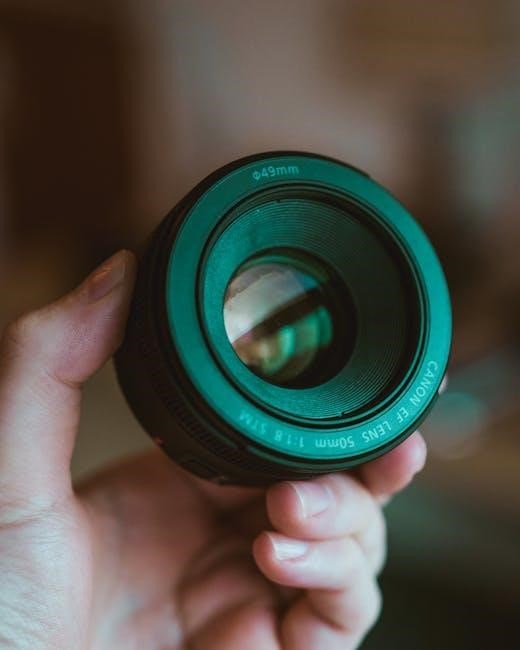
Troubleshooting Common Issues
Troubleshooting common issues with Canon FL lenses involves resolving aperture sticking, focusing misalignment, and lens mount wear. Regular cleaning and proper maintenance often prevent these problems.
Resolving Aperture Sticking Issues
Aperture sticking in Canon FL lenses can be resolved by cleaning the aperture mechanism with a soft brush and mild solvents. Ensure the lens is set to manual mode and avoid forcing the aperture ring. Regular maintenance, such as lubricating moving parts with appropriate oils, prevents sticking. If issues persist, professional servicing may be required. Always handle the lens with care to avoid dirt and moisture, which can exacerbate the problem. Proper storage and maintenance are key to maintaining optimal aperture functionality and ensuring long-term performance.
Focusing Problems and Solutions
Focusing issues with Canon FL lenses often arise from dirt, misalignment, or wear. Clean the focus ring and internal mechanisms with a soft brush and mild solvents. Ensure the lens is properly mounted and aligned with the camera. If focusing is inconsistent, check the focusing screen for damage or misplacement. Lubricate the focus ring gently with appropriate oils to maintain smooth operation. For severe problems, professional adjustment or servicing may be necessary to restore accurate focus functionality and ensure sharp image capture. Regular maintenance prevents such issues and extends lens lifespan.
Dealing with Lens Mount Wear and Tear
Lens mount wear and tear can affect image quality and camera-lens communication. Inspect the mount for dirt, rust, or misalignment. Clean gently with a soft cloth and avoid harsh chemicals. For minor wear, use a lens mount adapter to stabilize the connection. If the mount is damaged, consider professional servicing to realign or replace worn parts. Regularly cleaning and storing the lens properly prevents excessive wear. Addressing mount issues promptly ensures reliable performance and maintains the lens’s optical accuracy over time.
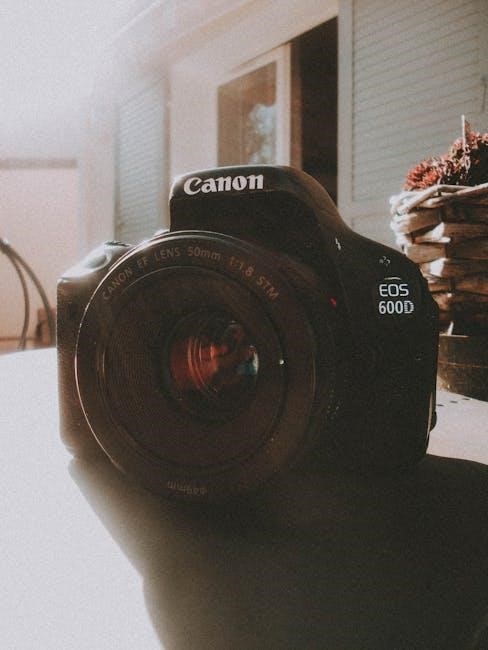
Canon FL Lens Service Manuals
Downloading the Official Canon FL Lens Manual
The official Canon FL Lens Manual is freely downloadable as a PDF from Canon U.S.A., Inc. or trusted third-party resources like ManualsLib, ensuring easy access to repair, maintenance, and troubleshooting guides for FL lenses.
The official Canon FL Lens Manual can be downloaded for free from Canon U.S.A., Inc. or trusted third-party sites like ManualsLib. Available as a PDF, it provides detailed instructions for repair, maintenance, and troubleshooting. Users can access guides for specific models, such as the FL-F 300MMF/5.6, ensuring compatibility with various Canon cameras. This resource is essential for photographers seeking to optimize their lens performance and address technical issues effectively. It also includes sections on aperture control, focusing techniques, and exposure settings for enhanced photography results.
Understanding the Service Manual Content
The Canon FL Lens Service Manual offers detailed instructions for repair, maintenance, and troubleshooting, ensuring optimal lens performance. It includes sections on aperture control, focusing techniques, and exposure settings, tailored for various FL lens models. The manual also provides guidance on resolving common issues like aperture sticking and focusing problems. Additionally, it covers maintenance tips and compatible accessories, such as lens hoods and filters. This comprehensive guide is designed to help photographers and technicians maintain and restore their FL lenses to peak functionality, ensuring lasting performance and image quality.
DIY Repairs and Maintenance Guidance
The Canon FL Lens Manual provides step-by-step DIY repair and maintenance instructions, empowering users to address common issues independently. Detailed guidance includes cleaning the lens and aperture blades, lubricating mechanical components, and replacing worn-out parts. The manual emphasizes proper tools and techniques to avoid damage, ensuring repairs are done safely and effectively. Additionally, it offers advice on preventing lens mount wear and tear, ensuring long-term functionality and optical performance, helping users maintain their FL lenses in pristine condition without professional assistance.
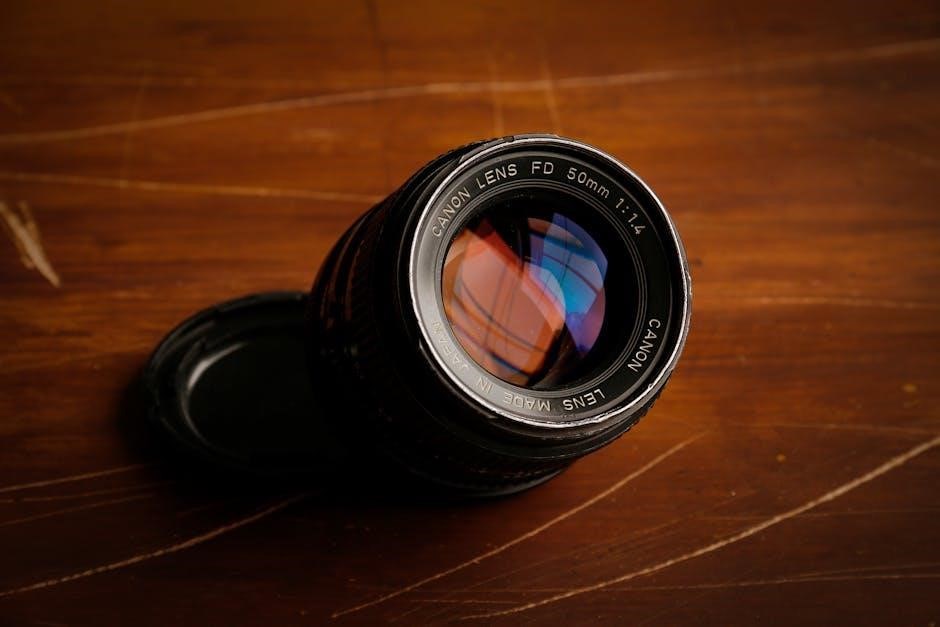
Additional Resources
For further learning and troubleshooting, explore official Canon websites, user guides, and repair manuals. Online forums and communities also offer practical advice and expert tips for FL lens enthusiasts.
Online Communities for FL Lens Users
Online forums and communities are invaluable for FL lens enthusiasts, offering shared knowledge, troubleshooting tips, and inspiration. Platforms like Facebook groups, Reddit forums, and specialized photography websites host active discussions. Users can engage with experts, ask questions, and learn from others’ experiences. These communities often share repair guides, maintenance tips, and creative techniques, fostering a collaborative environment. Participating in these spaces can enhance your understanding and maximize the potential of your Canon FL lenses. Active engagement ensures access to a wealth of resources and support.
Recommended Reading for Lens Enthusiasts
For enthusiasts seeking in-depth knowledge, the Canon FL Service Manual is a must-read, offering detailed insights into lens repair and maintenance. Additional resources include user guides for specific FL lenses, such as the FL 19mm f/3.5, and troubleshooting tips from trusted sources like Butkus and Canon USA. Photography forums and blogs also provide valuable perspectives, sharing real-world experiences and creative techniques. These materials empower users to unlock the full potential of their FL lenses while fostering a deeper understanding of their capabilities and care.
Canon Customer Support and Service Centers
Canon offers dedicated support through its official website, providing access to user manuals, repair services, and troubleshooting guides. Regional service centers in locations like the U.S. and India ensure prompt assistance for FL lens users. Experts at these centers address queries, from maintenance to complex repairs, ensuring optimal performance. Additionally, Canon’s support teams are reachable through phone and email, offering personalized solutions for enthusiasts and professionals utilizing FL lenses in their photography endeavors and equipment care routines.
Mastery of the Canon FL lens manual ensures optimal performance, unlocking creative potential through precise control and maintenance, while fostering a deeper connection with your photographic tools and craft.
Final Thoughts on Using Canon FL Lenses
Canon FL lenses offer exceptional optical quality and durability, making them a timeless choice for photographers. Their compatibility with various Canon models, including modern cameras via adapters, ensures versatility. Regular maintenance, such as cleaning and proper storage, is crucial for preserving their performance. Exploring resources like the official manual and online communities can enhance your experience. Whether for macro, telephoto, or wide-angle photography, FL lenses deliver outstanding results, making them a valuable addition to any photographer’s toolkit for achieving creative and professional-grade imagery.
Encouragement for Further Exploration
Exploring the capabilities of Canon FL lenses opens up a world of creative possibilities. From the FL 19mm wide-angle lens to telephoto models, each offers unique perspectives. Experiment with aperture control and focusing techniques to master your craft. Dive into online forums and manuals for deeper insights. Connecting with photography communities can inspire new approaches. Embrace the journey of discovery, as FL lenses continue to deliver exceptional results for both casual and professional photographers, fostering a deeper connection with the art of photography.
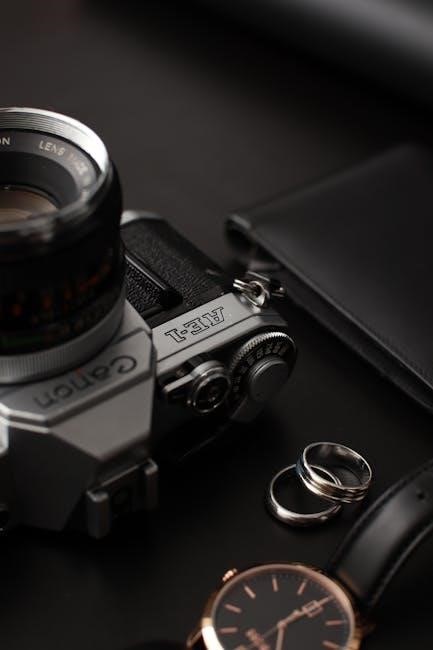
Bonus Tips for FL Lens Users
Experiment with FL lenses for unique perspectives. Clean regularly and use filters to enhance results. Reverse mounting for macro shots adds creative possibilities to your photography.
Expert Advice for Optimal Performance
For optimal performance with Canon FL lenses, ensure proper mounting and alignment with your camera. Regularly clean the lens surfaces and use high-quality filters to maintain image clarity. Always manually focus in low-light conditions for precision, and adjust the aperture ring smoothly to avoid wear. Store lenses in a cool, dry place to prevent fungus growth. These practices will extend the life of your FL lenses and preserve their optical excellence for years of exceptional photography.
Unconventional Uses for FL Lenses
Canon FL lenses can be creatively repurposed beyond traditional photography. Attach them to telescopes for astrophotography or use them as macro lenses with extension tubes for extreme close-ups. Their manual focus design makes them ideal for stop-motion animation and time-lapse projects. Additionally, FL lenses can be adapted to digital cameras using third-party mounts, offering a unique blend of vintage optics and modern sensor technology. Experimenting with these unconventional uses unlocks new artistic possibilities and breathes fresh life into classic glass.
